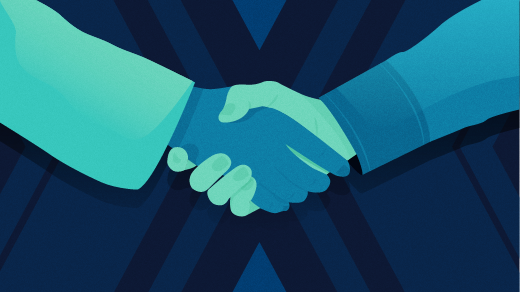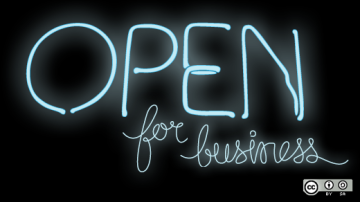When it comes to digital transformation, businesses seem to be on the right track improving their customers' experiences through the use of technologies. Today, so much digital transformation literature describes the benefits of "delivering new value to customers" or "delivering value to customers in new ways."
But "bringing new value to customers" is just the beginning. An even more powerful effect of digital transformation efforts is empowering customers.
"What?" you may be saying. "How could I possibly empower customers? What does that even mean?"
With this series, we're here to help. In this article specifically, we'll define customer empowerment and explain why it should be a concern for any organization facing the possibility of transformation.
Defining customer empowerment
Customer empowerment begins with the idea of giving customers access to the information, knowledge, opportunities, and authority to act in their own best interests inside the boundaries of their organizations and industries. This translates into an ability for customers to do more for themselves.
Creating systems for customer empowerment means doing more than merely adding value to existing customer relationships. It means developing entirely new kinds of relationships—more open relationships—with customers. And that, in turn, means organizations undergoing digital transformations will need to understand how openness affects not only the technical connections they make with people but also the social connections responsible for the success of the new systems they're putting in place.
The customer relationships you want to create are not merely the result of saying "Here's what we do for you, dear customer"; they are like the relationships you have in other areas of your life: Trusting. Reciprocal. Authentic.
In short, customer empowerment is a natural, inevitable step in digital transformation. It involves using open values, open processes, and open software to transform the relationship with the customer by trusting them and giving them the information and opportunities to engage differently with your company.
Think of the way employee empowerment works in open organizations. Leaders in these organizations make information, opportunities, and authority available to stakeholders so they feel empowered to make decisions and solve problems in ways leaders might not have predicted. Customer empowerment works the same way—though in this case, the organization itself provides external parties with materials that empower their own innovative activities. Typically, they do this through new, customer-facing processes. It's imperative that businesses interested in customer empowerment have enough data and sufficiently frequent interactions with their customers to be able to understand them, and that associates in these businesses have a customer-centric mindset accompanied by the tools, processes, and training to make decisions that focus on customers' empowerment.
Makes sense, right? But what does it look like?
An empowerment continuum
Let's begin with one example from the retail industry. Nordstrom is a company that repeatedly earns high marks for its empowered employees and its superior customer service. Nordstrom customers feel empowered when they interact with the brand because the organization goes to great lengths to ensure that information on sizes for each item is correct, that pictures are color-true, that the opportunity to shop is convenient through online sites and mobile apps, and that trying new brands is risk-free for customers (because shipping is free). Nordstrom even manages return shipping through printable labels directly on its website. The company is trusting customers not to order clothes and return them after wearing them.
This is an example of a company operating at the far end of a customer empowerment continuum. The empowerment practices we describe are low-risk—that is, the customer behaviors Nordstrom is trying to cultivate are aimed at helping customers do more of what Nordstrom expects them to do (buy goods).
But we can follow that customer empowerment continuum to identify various ways companies might empower customers (and in the process grant them the power to innovate and surprise). Kelvin Claveria, for example, outlines several examples: Mountain Dew collaborated with customers on their new flavor, "Voltage"; Buffer was transparent with customers and businesses about their security breach; Coca-Cola involved its fan community in building marketing content. These examples (all of which focus on marketing) demonstrate a higher degree of risk, but they're not quite on the far edge of our customer empowerment continuum.
At that edge is full-on customer empowerment, where a trusted relationship with the customer lays the foundation of interactions. We might think of open source communities as exemplary in this regard: customers have access to the source code of the application they're using and are actively modifying the products they receive. What's more trusting and empowering than that?
In open source communities, which leverage collaborative development methods, anyone can share information, get feedback, and take advantage of numerous opportunities to write code and participate in the community projects. The community is trusting user-collaborators to participate honestly (and without malicious intent) at the same time that the community manages itself and bans users who don't participate with community values or take advantage.
What might customer empowerment in this sense look like for organizations?
In our next installment, we'll explore that question.








Comments are closed.